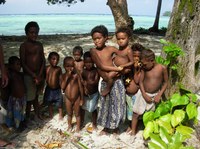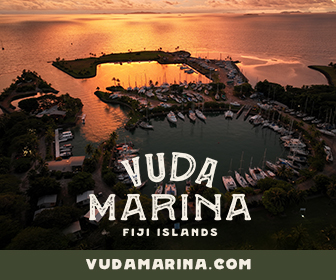Pacific Islands’ drought driven by El Nino
The United Nations estimates as many as 4.7 million people are at risk from water shortages, food insecurity and disease across the Pacific region due to El Niño.
Published 10 years ago, updated 1 year ago


Drought caused by the El Niño effect in the Pacific is a serious and increasingly regular occurrence. Each El Niño event has resulted in water shortages and drought in American Samoa, Fiji, Kiribati, Marshall Islands, Federated States of Micronesia, Papua New Guinea, Solomon Islands, Samoa, Tonga & Vanuatu. This is something all cruisers planning on cruising the Pacific should be aware of.
The current El Niño has officially been declared as strong by the US National Oceanic and Atmospheric Administration with serious implications for both rainfall and cyclone activity across the region over the coming months.
Some climatologists are warning it could rival the 1997/98 event which was the most severe on record. The deputy director of the National Oceanic Atmospheric Administration’s Climate Prediction Centre in Washington DC, Mike Halpert, said this year’s event could even be one of the large impact events that roll around every 15 years or so. “What we can say with confidence is that we have a strengthening El Nino, it’s going to continue for the next couple of months,” he said. The full forecast released by NOAA’s Climate Prediction Centre called this year’s event “significant and staggering”.
Sea Surface Temperature (SST) anomalies in the central and eastern Pacific have increased since September and are close to or exceeding +2.5 degrees Celsius in places. A lack of rainfall is already starting to have devastating impacts on agriculture and food security, especially in places such Vanuatu, the Solomon Islands and the Northern Mariana Islands which are still recovering from the impacts of Tropical Cyclones Pam and Raquel, as well as Typhoon Soudelor.
El Nino-driven drought and frosts in the normally tropical highlands in Papua New Guinea and the Solomon Islands brought Tasmania-like weather to the region in August of this year. All the food gardens were lost in the affected areas. PNG is especially vulnerable given that around 80 per cent of food consumed in the country is grown in this region.
Noonsite was contacted by long-term Pacific cruiser Trish Comer, who has spent 12 months over the last 2 years cruising the Solomon Islands and PNG. “I recently learned that the El Nino conditions have caused drought which has in some areas had very serious consequences. One such area is reported to be the Western Province of the Solomon Islands. Of serious concern is that these subsistence islands bound communities may not have the resources to access basic necessities including, of course, water. Transport is their first burden – walking an option that is obviously out of the question. We have dear friends in the Western Province islands, and also in the East and North East islands of Papua New Guinea that is also affected. My research says that most aid in relation to this drought is in the more populated regions of Africa and Papua mainland. The islands will suffer without being heard. It is always this way.”
Officials in the Solomon Islands are calling for water rationing as drought conditions prevail there, especially in the northern provinces. Schools and health centres are being forced to close due to a lack of water.
In Fiji, many communities are experiencing the effects of an El Niño-induced drought, with farmers losing crops and water supplies drying out and water trucking underway. A drought warning is in place and the Government reports at least 30,000 people are now affected. Water deliveries are already reaching 67 000 people in Fiji.
Other El Niño effects include a drought declaration in Tonga after extremely dry weather for nearly a year and further low rainfall expected for the rest of the year. Emergency water supplies were distributed to the outer islands and water desalination services are available if needed.
Young children have been the most affected in the drought that is compounding the destruction caused by Cyclone Pam in Vanuatu. People are struggling to grow crops, water sources are drying up and people are surviving on meagre food handouts. 90 000 people here are being targeted with emergency food supplies.
The dry weather is causing more than just food shortages. Traditional water sources are drying up, and there’s increasing contamination of those that remain. The El Niño event is expected to peak in the coming months but the impacts, especially on food security, may last as long as two years.
Trish raises the practical issues for visiting cruising boats; “Cruisers will need to be mindful of scarcity on their way both of food and water. Before this event trade was really easy and very helpful for islanders. Now it will be an aid rather than trade and cruisers should try to minimise their impact on scarce food and water supplies. Aid organisations in the area include World Vision and Care Australia, although most efforts seem to be in PNG. Water purification tablets seem to be in demand and I expect rehydration drinks etc. for children. Red Eye is endemic now too and antibiotics are not readily available. Those in Asia heading that way could buy up on those things and download info. to explain usage etc.
“Please are their cruisers in these regions who can report whether the conditions are as serious as I am hearing and more importantly WHO is on the ground for people to donate to or assist.”
Please feedback information [Broken Link] to noonsite if you are currently in this area about current drought conditions and how the cruising community can best assist or donate to those in need…
Related News Stories
Related to following destinations: American Samoa, Federated States of Micronesia, Fiji, Kiribati, Marshall Islands, Papua New Guinea, Samoa, Solomon Islands, Tonga, Vanuatu
Related to the following Cruising Resources: Cruising Impact, Environment







